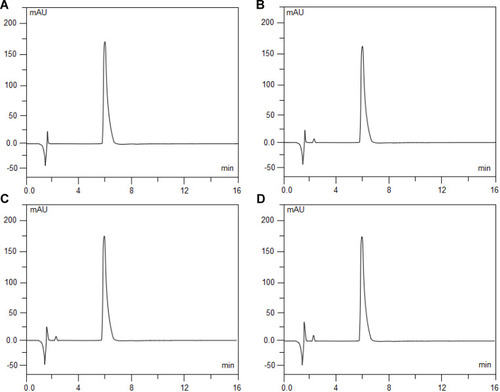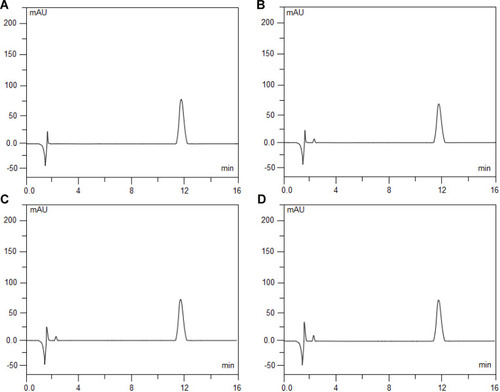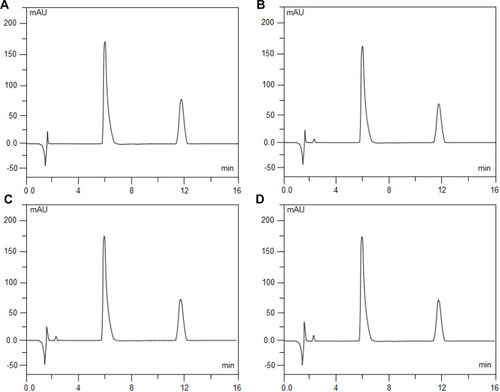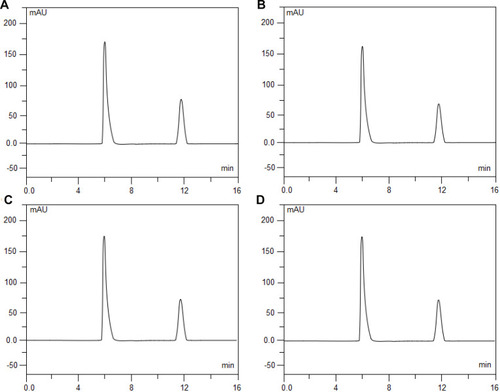Figures & data
Table 1 Validation of HPLC Method for Determination of Fentanyl Citrate and Naloxone Hydrochloride
Figure 2 Chromatograms of 20μg/mL fentanyl citrate that was freshly prepared (A), exposed to 0.1 mol/L hydrochloric acid (HCl) at 60°C for 5 hours (B), exposed to 0.1 mol/L sodium hydroxide (NaOH) at 60°Cfor 5 hours (C), and exposed to 3% hydrogen peroxide (H2O2) at 60°C for 5 hours (D). Fentanyl citrate elutes at 6.21 min.

Figure 3 Chromatograms of 4μg/mL naloxone hydrochloride admixtures that were freshly prepared (A), exposed to 0.1 mol/L hydrochloric acid (HCl) at 60°C for 5 hours (B), exposed to 0.1 mol/L sodium hydroxide (NaOH) at 60°Cfor 5 hours (C), and exposed to 3% hydrogen peroxide (H2O2) at 60 for 5 hours (D). Naloxone hydrochloride at 11.97 min.

Figure 4 Chromatograms of 20μg/mL fentanyl citrate and 4μg/mL naloxone hydrochloride admixtures that were freshly prepared (A), exposed to 0.1 mol/L hydrochloric acid (HCl) at 60°Cfor 5 hours (B), exposed to 0.1 mol/L sodium hydroxide (NaOH) at 60°Cfor 5 hours (C), and exposed to 3% hydrogen peroxide (H2O2) at 60°C for 5 hours (D). Fentanyl citrate elutes at 6.21 min (peak 1) and naloxone hydrochloride at 11.97 min (peak 2).

Table 2 Amount of Initial Concentration of Fentanyl Citrate (20μg/mL) and Naloxone Hydrochloride (4μg/mL) Remaining After 72-h Storage at 25°C in Polyolefin Bags or Glass Containers (%; Mean ± Sd; n=3)
Table 3 Amount of Initial Concentration of Fentanyl Citrate (20μg/mL) and Naloxone Hydrochloride (4μg/mL) Remaining After 72-h Storage at 4°C in Polyolefin Bags or Glass Containers (%; Mean ± Sd; n=3)
Figure 5 Typical chromatograms of fentanyl citrate and naloxone hydrochloride admixtures on study 72th hour. Mixtures stored at 25°C in glass containers (A) and polyolefin bags (B); Mixtures stored at 4°C in glass containers (C) and polyolefin bags (D). Fentanyl citrate elutes at 6.21 min (peak 1) and naloxone hydrochloride at 11.97 min (peak 2).


